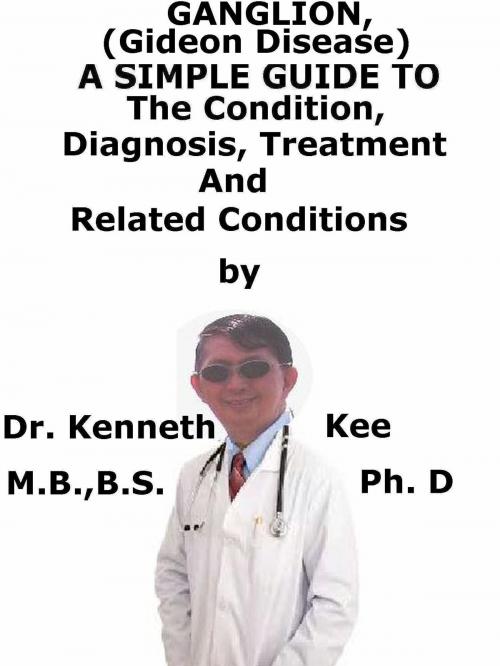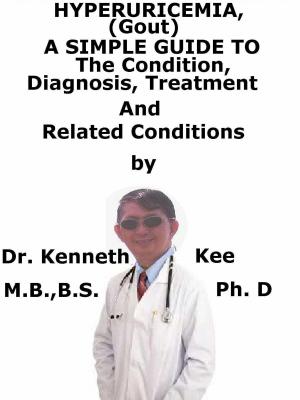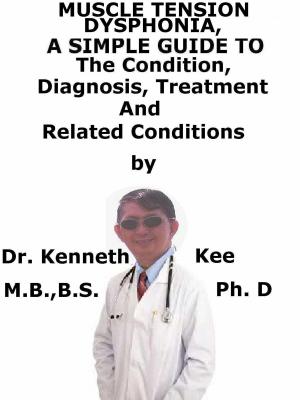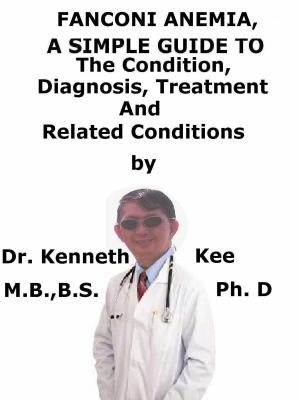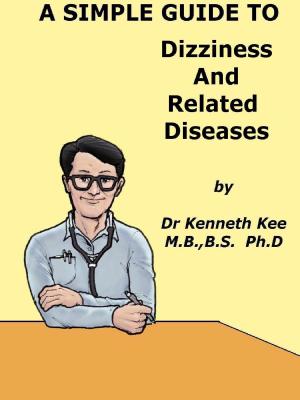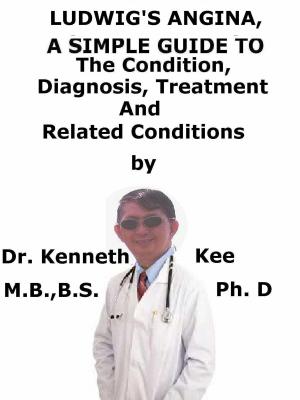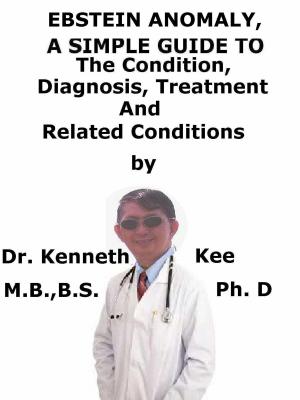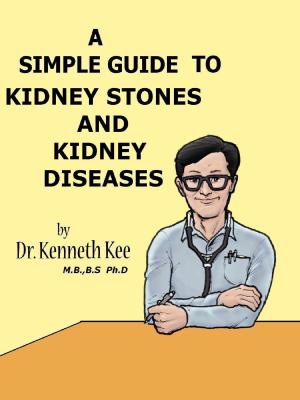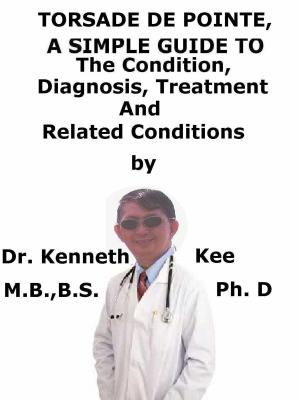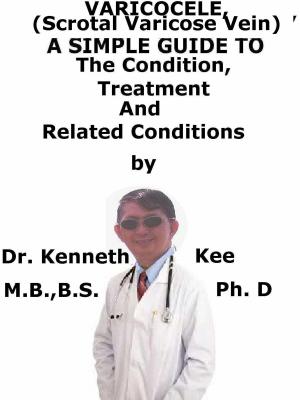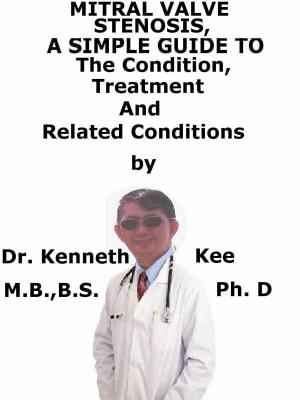Ganglion, (Gideon disease) A Simple Guide To The Condition, Diagnosis, Treatment And Related Conditions
Nonfiction, Health & Well Being, Health, Ailments & Diseases, Skin, Medical, Specialties, Orthopedics| Author: | Kenneth Kee | ISBN: | 9780463494493 |
| Publisher: | Kenneth Kee | Publication: | June 8, 2018 |
| Imprint: | Smashwords Edition | Language: | English |
| Author: | Kenneth Kee |
| ISBN: | 9780463494493 |
| Publisher: | Kenneth Kee |
| Publication: | June 8, 2018 |
| Imprint: | Smashwords Edition |
| Language: | English |
This book describes the Ganglion, Diagnosis, Treatment and Related Conditions
A ganglion is a medical disorder consisting of a cyst found next to tendon sheath or joint.
A ganglion is a small lump that has a thick gel-like material inside it.
It looks and feels like a smooth swelling under the skin.
A ganglion is normally attached to a joint or tendon, and the fluid inside is like a thicker form of the fluid which 'lubricates' the tendon sheaths and joint (synovial fluid).
The most frequent site for a ganglion to be found is on the back of the wrist.
It can also happen on the other side of the wrist, on the hand, and on the top of the foot.
Other sites of the body are involved less frequently.
It may happen at any part of the body but is most frequent on the dorsum of the hand or foot.
What is the cause of Ganglion?
It is not fully understood how it is formed.
The etiology of the ganglion is not known but the ganglion has within its cyst a mucinous fluid which is similar but thicker than the fluid inside a tendon sheath.
It has a stalk that can be attached to a tendon sheath or joint.
The present proposal for the cause of a Ganglion is that an effective check valve forms allowing fluid out of the joint, but not back in
Ganglion cysts are observed in children but frequently go off by themselves in this age group in 2 to 3 years.
A ganglion is a fluid-filled lump which can happen near joints or tendons.
It is not a cancer.
It is normally harmless but can be unsightly.
What are the symptoms of Ganglion?
The main symptom is one of swelling.
Ganglions (sometimes called ganglia) typically are very round and smooth.
They can vary from being very small (pea-sized) to being larger (plum-sized).
Larger ganglions can sometimes be ugly looking.
They may sometimes be painful, especially if they lie next to a nerve.
They never spread to other parts of the body.
-
The onset is normally related to a history of trauma.
-
Local pain and swelling is present
-
Feeling of weakness may be felt
-
Swelling normally becomes bigger in size in relation to activity of patient.
Physical examination
-
Hard swelling on the dorsum of hand or foot is often described as a small bone-like lump
-
The ganglion is movable freely
-
The ganglion is most obvious when the hand or foot is flexed.
Usually no tests are needed, and the doctor can diagnose if the lump is a ganglion just by feeling and examining the swelling.
If a ganglion does not cause symptoms it is best just to leave it alone.
Many people prefer to be rid of them, especially if they are producing discomfort or pain.
Many people know of the traditional treatment.
It is to smash them with a heavy book (traditionally the family bible - Gideon disease).
This will break the cyst under the skin.
The gel-like liquid is then taken into the tissue and then the bloodstream.
- Aspiration of the Ganglion under local anesthesia.
In some cases it is possible to aspirate (suck out) the fluid with a needle and syringe.
If the gel-like fluid is thickened and hard to suck this may not work.
-
Punctuate the ganglion with a large sterile needle in many areas
-
Inject it with a steroid medicine
-
After the above procedures, compression dressing is applied for 48 to 72 hours.
Surgery:
If required, a ganglion can be removed by a small operation.
Surgery is resorted only if the other methods do not work or if symptoms continue.
Surgical excision of the ganglion is typically the most successful treatment.
TABLE OF CONTENT
Introduction
Chapter 1 Ganglion
Chapter 2 Causes
Chapter 3 Symptoms
Chapter 4 Diagnosis
Chapter 5 Treatment
Chapter 6 Prognosis
Chapter 7 External Carpi Ulnar Tendonitis
Chapter 8 Trigger Finger
Epilogue
This book describes the Ganglion, Diagnosis, Treatment and Related Conditions
A ganglion is a medical disorder consisting of a cyst found next to tendon sheath or joint.
A ganglion is a small lump that has a thick gel-like material inside it.
It looks and feels like a smooth swelling under the skin.
A ganglion is normally attached to a joint or tendon, and the fluid inside is like a thicker form of the fluid which 'lubricates' the tendon sheaths and joint (synovial fluid).
The most frequent site for a ganglion to be found is on the back of the wrist.
It can also happen on the other side of the wrist, on the hand, and on the top of the foot.
Other sites of the body are involved less frequently.
It may happen at any part of the body but is most frequent on the dorsum of the hand or foot.
What is the cause of Ganglion?
It is not fully understood how it is formed.
The etiology of the ganglion is not known but the ganglion has within its cyst a mucinous fluid which is similar but thicker than the fluid inside a tendon sheath.
It has a stalk that can be attached to a tendon sheath or joint.
The present proposal for the cause of a Ganglion is that an effective check valve forms allowing fluid out of the joint, but not back in
Ganglion cysts are observed in children but frequently go off by themselves in this age group in 2 to 3 years.
A ganglion is a fluid-filled lump which can happen near joints or tendons.
It is not a cancer.
It is normally harmless but can be unsightly.
What are the symptoms of Ganglion?
The main symptom is one of swelling.
Ganglions (sometimes called ganglia) typically are very round and smooth.
They can vary from being very small (pea-sized) to being larger (plum-sized).
Larger ganglions can sometimes be ugly looking.
They may sometimes be painful, especially if they lie next to a nerve.
They never spread to other parts of the body.
-
The onset is normally related to a history of trauma.
-
Local pain and swelling is present
-
Feeling of weakness may be felt
-
Swelling normally becomes bigger in size in relation to activity of patient.
Physical examination
-
Hard swelling on the dorsum of hand or foot is often described as a small bone-like lump
-
The ganglion is movable freely
-
The ganglion is most obvious when the hand or foot is flexed.
Usually no tests are needed, and the doctor can diagnose if the lump is a ganglion just by feeling and examining the swelling.
If a ganglion does not cause symptoms it is best just to leave it alone.
Many people prefer to be rid of them, especially if they are producing discomfort or pain.
Many people know of the traditional treatment.
It is to smash them with a heavy book (traditionally the family bible - Gideon disease).
This will break the cyst under the skin.
The gel-like liquid is then taken into the tissue and then the bloodstream.
- Aspiration of the Ganglion under local anesthesia.
In some cases it is possible to aspirate (suck out) the fluid with a needle and syringe.
If the gel-like fluid is thickened and hard to suck this may not work.
-
Punctuate the ganglion with a large sterile needle in many areas
-
Inject it with a steroid medicine
-
After the above procedures, compression dressing is applied for 48 to 72 hours.
Surgery:
If required, a ganglion can be removed by a small operation.
Surgery is resorted only if the other methods do not work or if symptoms continue.
Surgical excision of the ganglion is typically the most successful treatment.
TABLE OF CONTENT
Introduction
Chapter 1 Ganglion
Chapter 2 Causes
Chapter 3 Symptoms
Chapter 4 Diagnosis
Chapter 5 Treatment
Chapter 6 Prognosis
Chapter 7 External Carpi Ulnar Tendonitis
Chapter 8 Trigger Finger
Epilogue
